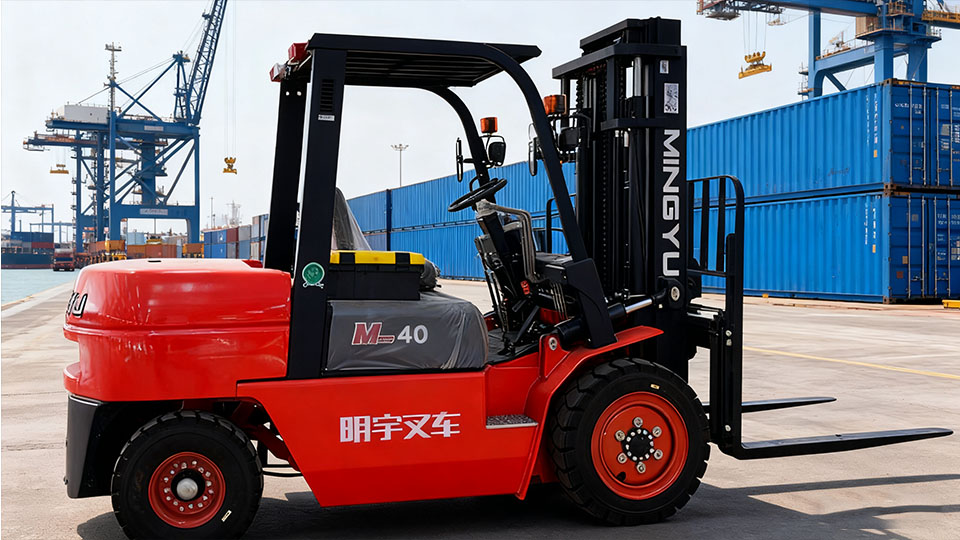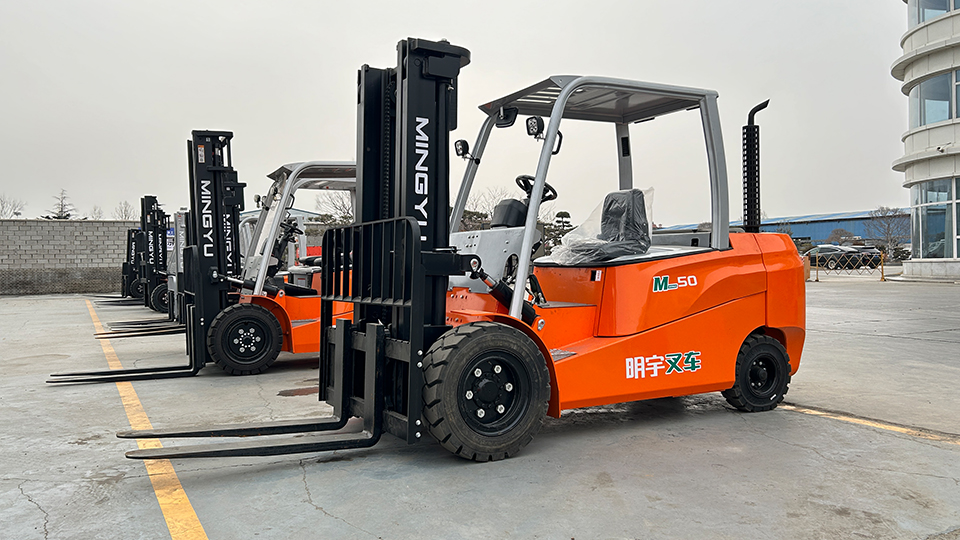
Introduction
In the world of logistics, construction, and materials handling, the powered industrial truck—most commonly the forklift—is indispensable. Capable of lifting and maneuvering loads weighing thousands of pounds, it is a machine that bridges human capability and industrial scale. However, this immense utility comes with a significant inherent hazard. Forklifts are responsible for a substantial number of workplace fatalities and serious injuries annually, primarily due to tip-overs, collisions, and pedestrians being struck.
The simple question, "Can you drive a forklift without certification?" carries a complex, legally definitive, and safety-critical answer: No, absolutely not.
In the United States, driving a powered industrial truck without meeting specific training and evaluation requirements mandated by the Occupational Safety and Health Administration (OSHA) is a violation of federal law, exposing the individual, the employer, and the workplace to severe risks, regulatory penalties, and criminal liability.
I. The Unwavering Regulatory Mandate: OSHA 29 CFR 1910.178
The legal requirement for forklift training and certification is not a suggestion or an industry best practice—it is an explicit federal mandate. OSHA Standard 29 CFR 1910.178 (Powered Industrial Trucks) dictates the binding rules for the safe operation, maintenance, and training associated with these vehicles.

A. The Definition of a "Competent Operator"
The core of the standard is the requirement that the employer must ensure that "each powered industrial truck operator is competent to operate a powered industrial truck safely, as demonstrated by the successful completion of the training and evaluation specified in this paragraph."
This regulation establishes a three-part requirement, often mistakenly simplified to just "certification":
Formal Instruction (Theory): This covers the physics of the truck, the principles of stability, understanding load capacity, pre-operation checks, and workplace-specific safety rules.
Practical Training (Demonstration): The trainee must physically operate the truck under direct supervision, demonstrating proficiency in all required tasks, such as maneuvering, stacking, and traveling.
Evaluation (Proof of Competence): The employer must evaluate the operator's performance to ensure they have the knowledge and skills necessary to operate the truck safely. This evaluation must be performed by a "person who has the knowledge, training, and experience to train operators and evaluate their competence."
The "certification" is simply the documented, formal proof that this comprehensive process has been successfully completed. Driving without this documented process means the operator is, by definition, an unauthorized and untrained worker under federal law.
B. The Tripartite Nature of Required Training
OSHA demands that training be both truck-specific and site-specific:
Training Component Description Why It's Critical
Truck-Specific Covers the particular type of truck the operator will use (e.g., internal combustion vs. electric, counterbalanced vs. reach truck). Each class of forklift has unique controls, stability characteristics, and capacities. Training must address these differences.
Workplace-Specific Covers the unique conditions of the worksite (e.g., narrow aisles, blind corners, ramps, floor surface hazards, pedestrian traffic). A skilled operator from one site can be immediately hazardous on another without site-specific training on layout and traffic rules.
Hazard-Specific Focuses on the hazards associated with the use of the truck (e.g., carbon monoxide from fuel, battery charging procedures, overhead clearance). Ensures the operator understands the non-operational dangers of the specific machine and environment.
导出到 Google 表格
C. Refresher Training and Re-Evaluation
Certification is not a one-time event. OSHA requires a mandatory re-evaluation of every operator's performance at least once every three years. Furthermore, refresher training is required immediately if:
The operator is involved in an accident or near-miss incident.
The operator has been observed operating the truck unsafely.
There are changes in the type of truck used or in the workplace conditions that could affect safe operation.
II. The Technical Imperative: Forklift Stability and Dynamics
The reason certification is mandatory is rooted in the complex, non-intuitive physics governing the forklift's operation. Unlike an automobile, a forklift is a non-suspension, counterbalanced vehicle designed on a different stability principle.
A. The Stability Triangle (Lateral and Longitudinal Stability)
The most fundamental concept taught in certification is the Stability Triangle. This is the area on the floor defined by the three support points of the truck: the two ends of the front axle and the center pivot point of the rear (steering) axle.
The Critical Rule: To maintain stability and prevent tip-over, the forklift’s Center of Gravity (CoG)—which includes the machine's weight and the load’s weight—must remain inside this imaginary triangle at all times.

Dynamic CoG Shift: The CoG is not static. It shifts with every action: accelerating, braking, turning, lifting, and traveling on an incline. Untrained operators lack the instinct and training to anticipate and compensate for these shifts, leading directly to tip-over accidents.
B. The Longitudinal Stability (Forward/Backward Tip)
A forklift acts as a teeter-totter or seesaw, with the front axle serving as the fulcrum. The counterweight at the rear balances the load on the forks.
Tip-Over Risk: The most common cause of fatality is a forward tip-over resulting from exceeding the truck’s Rated Capacity. This capacity is based on a specific Load Center (the distance from the face of the forks to the load’s center of gravity).
Untrained Misjudgment: An untrained operator often fails to understand that a small increase in load height or load center distance drastically reduces the truck’s lifting capacity. A heavy load carried 6 inches too far from the mast can instantly exceed the truck's capacity and cause a forward tip-over.
C. The Lateral Stability (Sideways Tip)
Lateral stability is compromised when turning, traveling with raised forks, or driving on uneven surfaces.
Turning Dynamics: When a forklift turns, centrifugal force pulls the CoG toward the outside of the turn. An untrained operator attempting to turn too quickly, especially with a high mast or an off-center load, will move the CoG outside the Stability Triangle, resulting in a lateral (sideways) tip-over, a lethal accident for the operator if a restraint system (seat belt) is not used.
Traveling with Forks Raised: Only a certified operator understands that the forks and load must be lowered to travel height (typically 4–6 inches off the ground) and the mast tilted back before movement. An untrained person might travel with the load raised high, creating an extremely high CoG that compromises both lateral and longitudinal stability.
III. The Legal and Financial Consequences of Non-Compliance
Driving a forklift without certification, or allowing an employee to do so, is not merely a technical error—it is a violation with severe legal and financial repercussions for the employer.
A. OSHA Penalties and Enforcement
OSHA issues citations and substantial monetary penalties for violations of 29 CFR 1910.178. Citations are categorized based on severity:
Serious Violation: Occurs when there is substantial probability that death or serious physical harm could result, and the employer knew, or should have known, of the hazard (e.g., allowing an untrained employee to operate). Penalties can reach tens of thousands of dollars per violation.
Willful Violation: Occurs when the employer knowingly disregards the standard or acts with plain indifference to employee safety. If a fatality results from a willful violation, the case may be referred to the U.S. Department of Justice for criminal prosecution. Willful violations carry maximum penalties over $150,000 per violation.
In the event of an accident, a lack of documented training is the primary piece of evidence used by OSHA to prove an employer's liability.
B. Civil Liability and Insurance Voidance
Beyond government fines, the lack of certification has profound legal consequences:
Negligence Lawsuits: If an uncertified operator causes injury to another employee or damage to property, the employer is almost guaranteed to face a lawsuit for Negligent Entrustment. The failure to adhere to federal safety standards (known as negligence per se) makes the defense of such a lawsuit nearly impossible.
Workers' Compensation: While Workers' Compensation insurance covers workplace injuries, insurers often deny coverage or severely increase premiums if the employer's systemic safety failure, such as the use of uncertified operators, is the proximate cause of the injury.
C. The Moral and Ethical Burden
The most significant consequence is the human cost. Forklift accidents, particularly tip-overs, are often fatal. The training and certification process is designed to instill a profound sense of respect for the machine's limitations and power. Allowing an employee to operate without this essential knowledge is an ethical failure that places their life and the lives of their colleagues in immediate, unwarranted danger.
IV. Dispelling Common Misconceptions
Several persistent myths perpetuate the idea that certification is optional:
Misconception Technical/Legal Reality
"I drove a tractor/car; I can drive a forklift." False. A forklift's rear-wheel steering and counterbalanced instability are fundamentally different. Automotive experience can breed dangerous overconfidence.
"My previous employer trained me 10 years ago." Insufficient. OSHA mandates re-evaluation every three years and refresher training after unsafe operation or changes to equipment/conditions. Outdated training is non-compliant.
"I only use it for light loads or quick trips." Irrelevant. The legal standard applies to all operation. Most accidents occur when moving short distances or handling what the operator perceives as a "quick and easy" task.
"The operator watched a safety video." Incomplete. OSHA requires formal instruction, practical demonstration, and a successful evaluation of competence. A video is only one part of the theoretical instruction.
Conclusion: The Mandate of Safety
The answer to whether one can drive a forklift without certification is a resounding no. The requirement for certification is the bedrock of industrial safety for powered industrial trucks, driven by the inherent physics of the machine and enforced by the weight of federal law.
Certification is not merely a card or a piece of paper; it is the documented proof that an operator has been educated in the complex stability dynamics of the machine, has demonstrated the technical competence to control a 10,000-lb piece of equipment, and understands the potentially lethal consequences of a single error.
Any employer who knowingly permits, or any employee who attempts, to operate a forklift without having successfully completed the full, documented OSHA-mandated training and evaluation process is creating a willful hazard, inviting regulatory disaster, and jeopardizing human life. In the industrial environment, competence is the key, and certification is the only legally accepted proof of that competence.
Name: selena
Mobile:+86-13176910558
Tel:+86-0535-2090977
Whatsapp:8613181602336
Email:vip@mingyuforklift.com
Add:Xiaqiu Town, Laizhou, Yantai City, Shandong Province, China